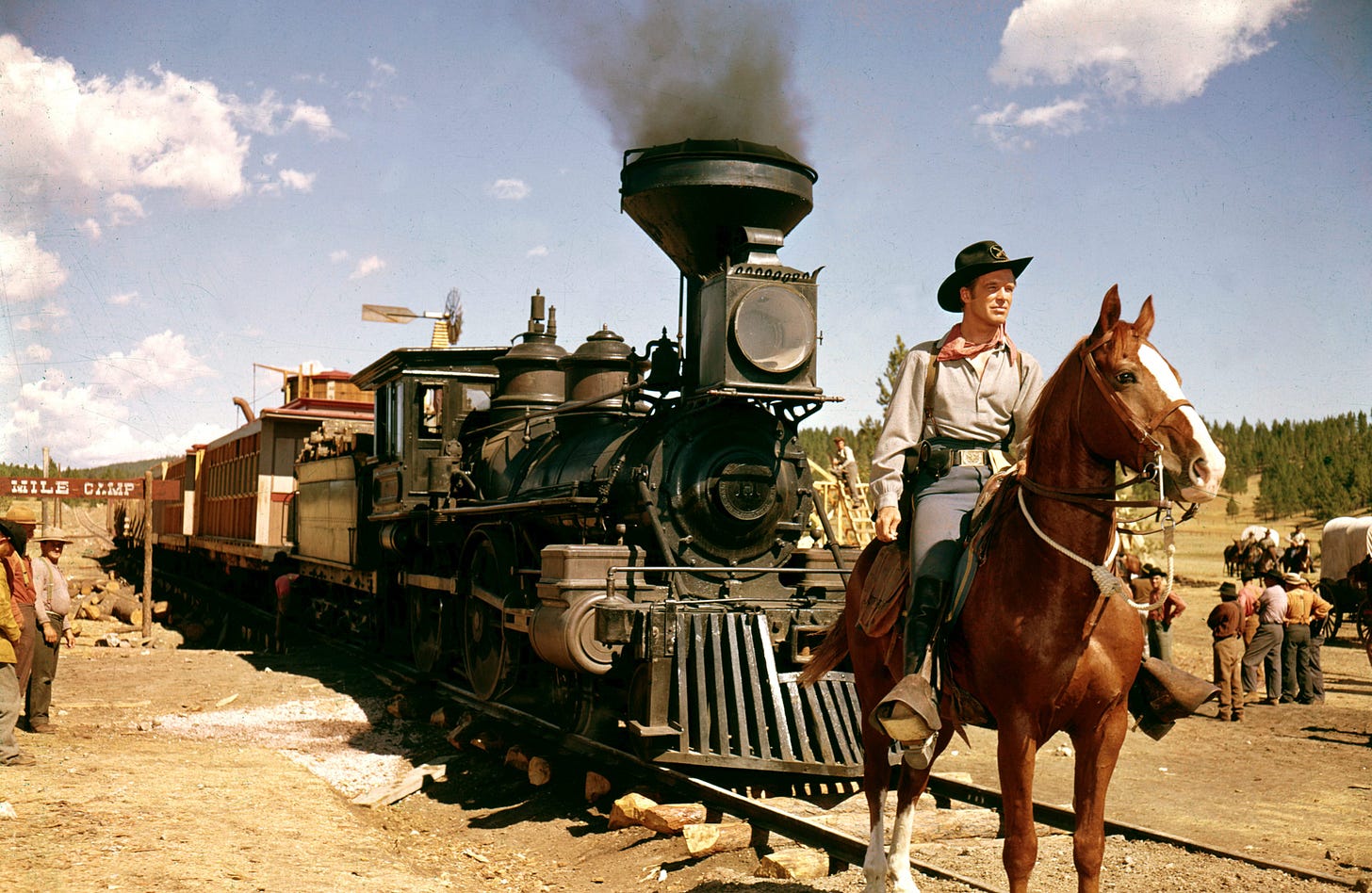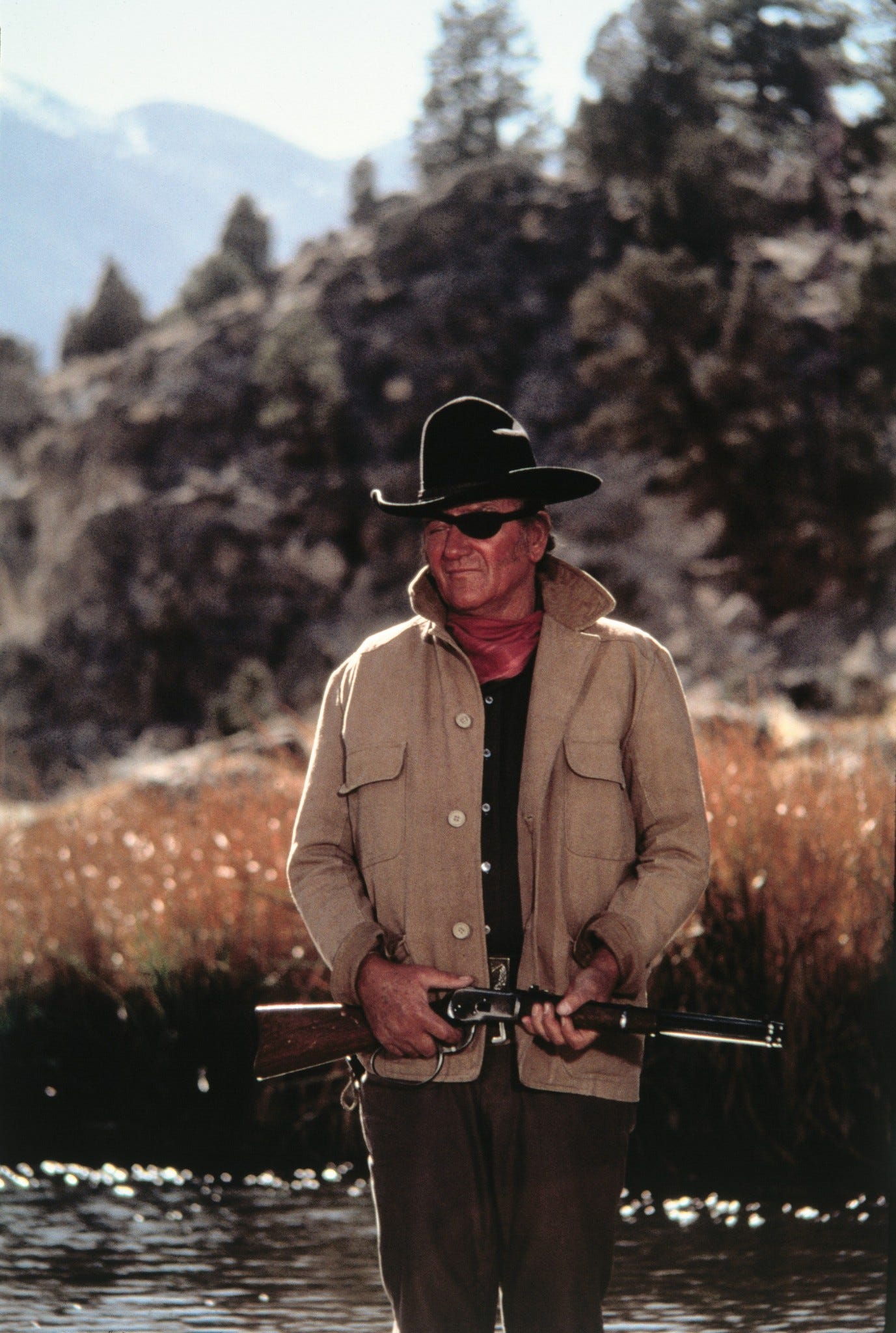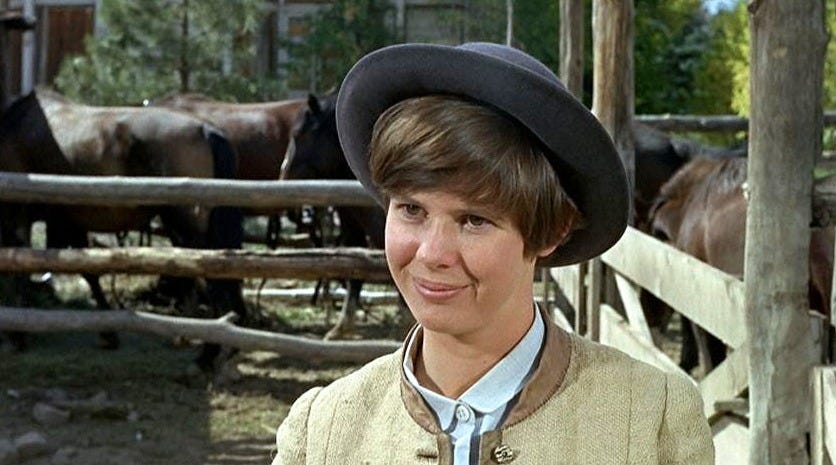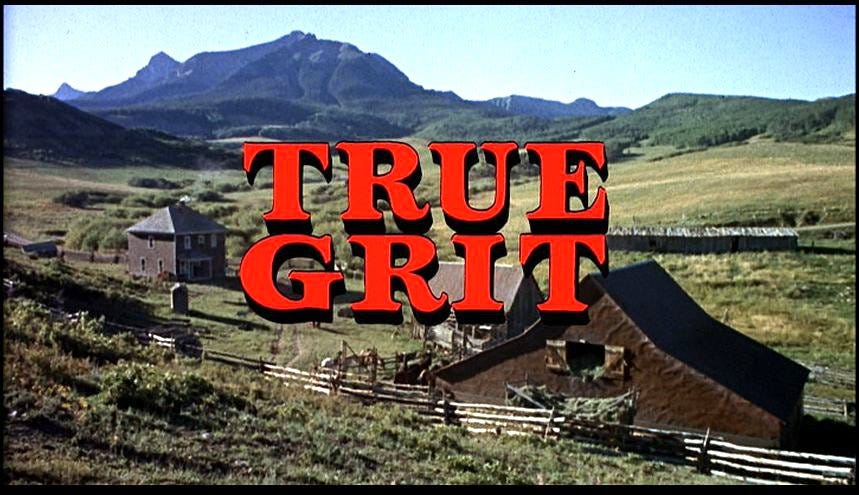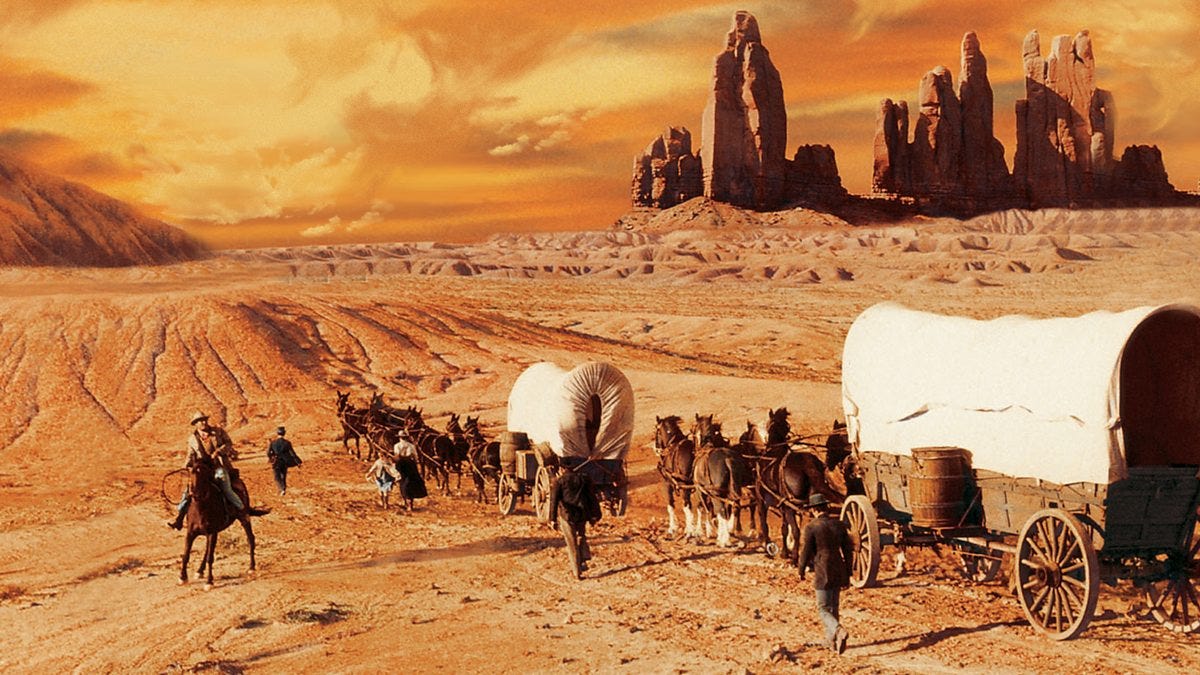The Western Landscape: Cinema’s Untamed Frontier
This week’s dispatch comes from somewhere between the silver screen and the Colorado sky.
I’m heading up into the mountains for a week of summer camp, where the stars shine real bright and the signal doesn’t. So consider this a brief but heartfelt note on two films that helped shape the image of the American West: the sweeping spectacle of How the West Was Won and the gritty charm of True Grit (1969).
Both reflect different angles of the Western myth. One painted in bold, panoramic strokes, the other told through dust, determination, and our first girl with a gun. Let’s saddle up and keep this short and sweet.
How the West Was Won (1962)
A grand, classic, Golden Age Hollywood epic in the truest sense. From its sprawling runtime to the constantly shifting cast, even a seven-minute overture kicks things off.
Split into five chapters, it charts the history and development of the American West, and the myth that shadows it. One of the strongest segments, “The Civil War,” is directed by our old friend John Ford (Stagecoach).
But while Westerns are often born from Hollywood, this one feels like it follows a completely different rulebook.
It lacks grit. The costumes sparkle, the colors are too bright, and no real danger threatens our heroes. It feels out of step with the Western tradition, almost like a fantasy version of a genre Hollywood itself helped invent.
It’s also, like so many films of its era, weighed down by relentlessly racist depictions of Native Americans, shown as savages, brutes, and enemies at every turn. Nothing new here, unfortunately, but something we’ll be exploring much more deeply in upcoming weeks.
True Grit (1969)
This one’s… well, grittier.
It follows a ragtag group of outcasts on a revenge mission through a darker, harsher landscape. Themes of family and survival ripple through its rougher exterior, and there’s more humor and heart than many of the colder, more ruthless Westerns we’ve seen.
And then there’s Mattie, with her dusty bowl cut, and a gun. Played by Kim Darby, she’s headstrong, sharp-tongued, and fearless in her quest for justice. What’s refreshing isn’t just that she’s involved in the plot, it’s that she drives it, and that everything else exists on an axis around it, with more fire than most men around her.
Darby’s performance is memorable, and it’s no surprise Hailee Steinfeld snagged an Oscar nom at age 14 for the 2010 remake.
These two films are almost like bookends on a dusty shelf: one a sweeping mosaic, the other a sharp-eyed character sketch. But what ties them together is the frontier. The idea of the frontier.
In Westerns, the frontier is where everything gets tested: courage, justice, identity, survival. It’s the edge of the known world, where the rules bend and characters are forced to reckon with who they really are. Whether it’s the Prescotts forging a path through history or Mattie Ross pushing against every limit in her way, the frontier demands change.
That’s what makes it the beating heart of the Western: a landscape big enough to hold myth, memory, and all the messy humanity in between.
Next week, we’ll be back to our regular riding time, and talking more about the Women of the West.
Their impact on the genre is undeniable, and we’ll dive into films that, excitingly, begin to tickle the edges of what might traditionally be defined as a “Western” 😉





